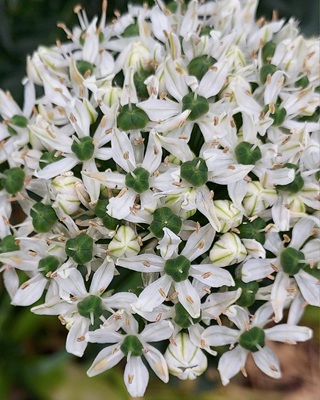Flower Properties
| Property | Value |
|---|---|
| English Name | Black Garlic |
| MainColor | White |
| PlantType | |
| Growth Type | |
| Season | August |
| ImageUrl | Allium-004 |
| Photographer | Gita |
| Location | |
| Human Toxicity | Non_Toxic |
Flower Details
Description
Allium nigrum is a perennial herb characterised by its narrow, elongated leaves and clusters of small, star-shaped white flowers. It typically grows in damp, shaded areas and has a strong garlic scent when crushed.
Distribution
This species is native to parts of Europe and Asia, often found in woodland and grassland habitats. It thrives in moist, well-drained soils and can be seen in the wild during spring and early summer.
Medicinal/Other Uses

✅ Traditionally, Wild Garlic has been used for its potential antimicrobial and anti-inflammatory properties. It is also known to be beneficial for cardiovascular health.
Edibility

Wild Garlic is edible and often used in cooking for its distinctive garlic flavour. The leaves, flowers, and bulbs can be consumed raw or cooked, adding a unique taste to various dishes.
Human Toxicity
Human toxicity: it is safe for human consumption and is often used as a culinary herb.
Pet Toxicity

Mildly Toxic to dogs and cats - ingestion of large quantities may cause gastrointestinal upset.
Active Compounds
Wild Garlic contains allicin, which is responsible for its characteristic smell and potential health benefits. Other compounds include flavonoids and various vitamins.
